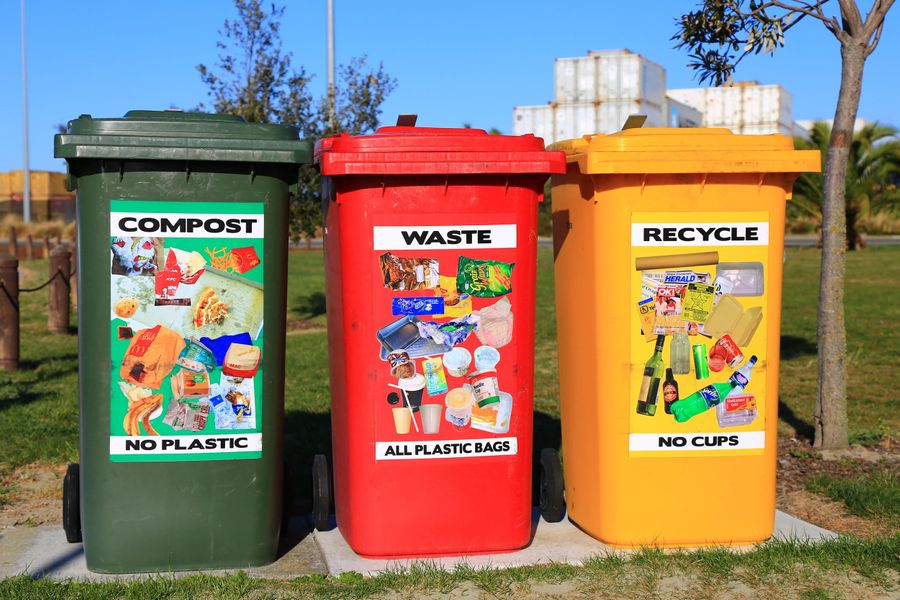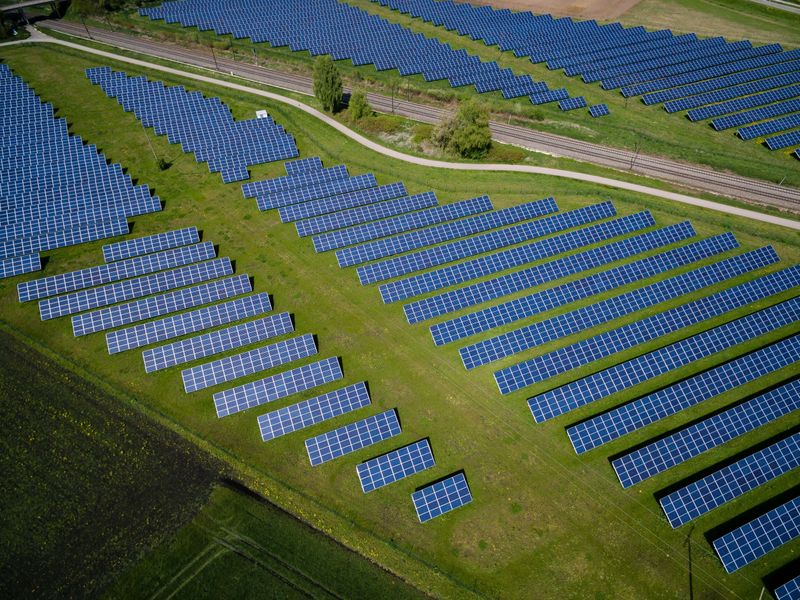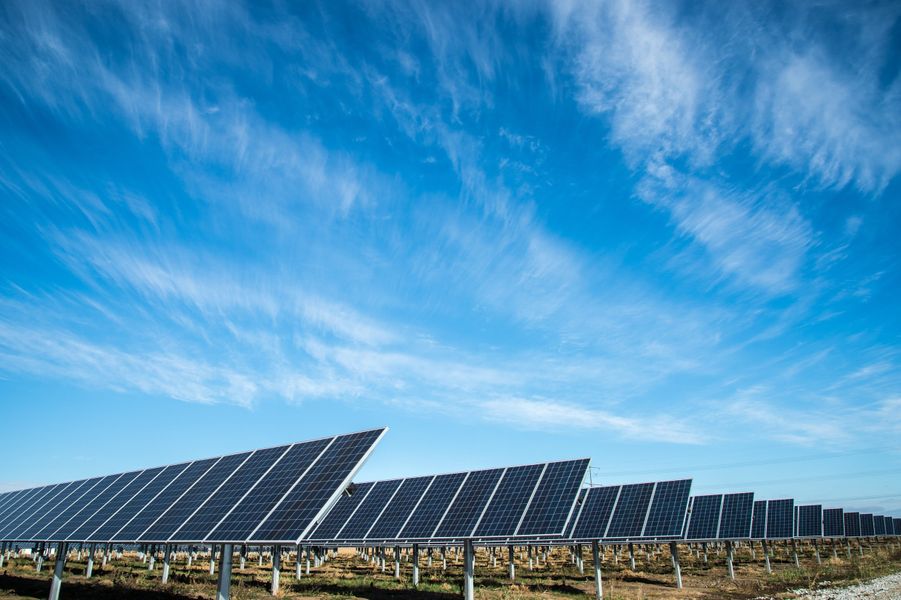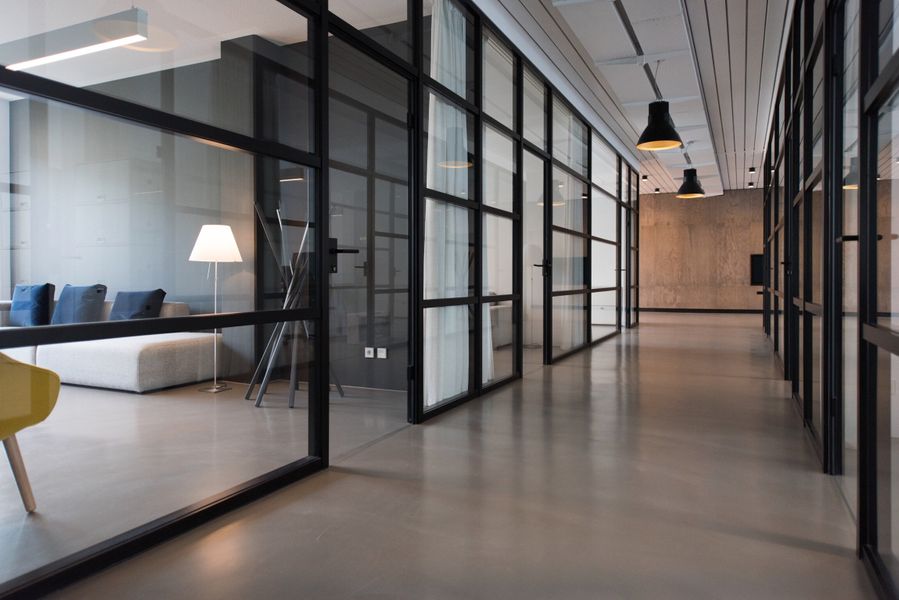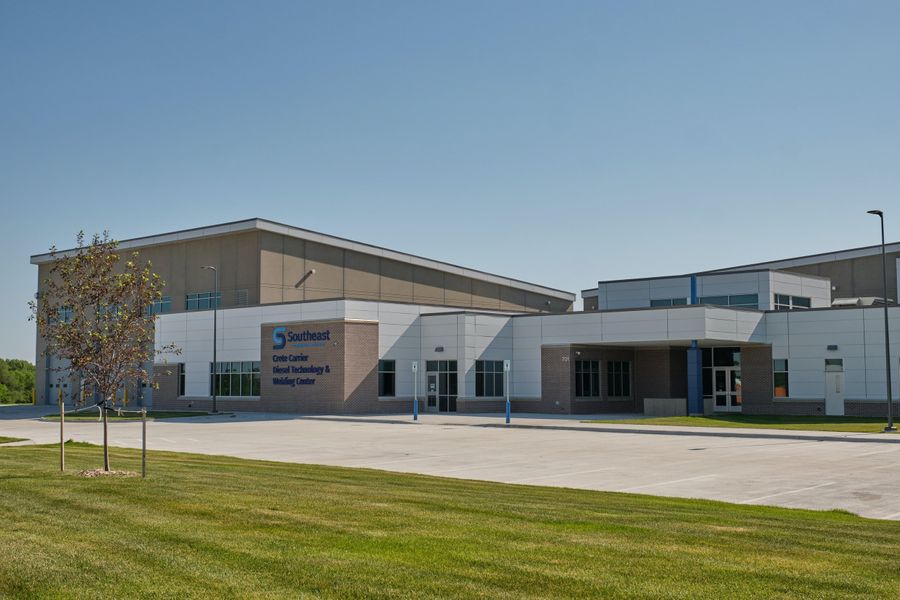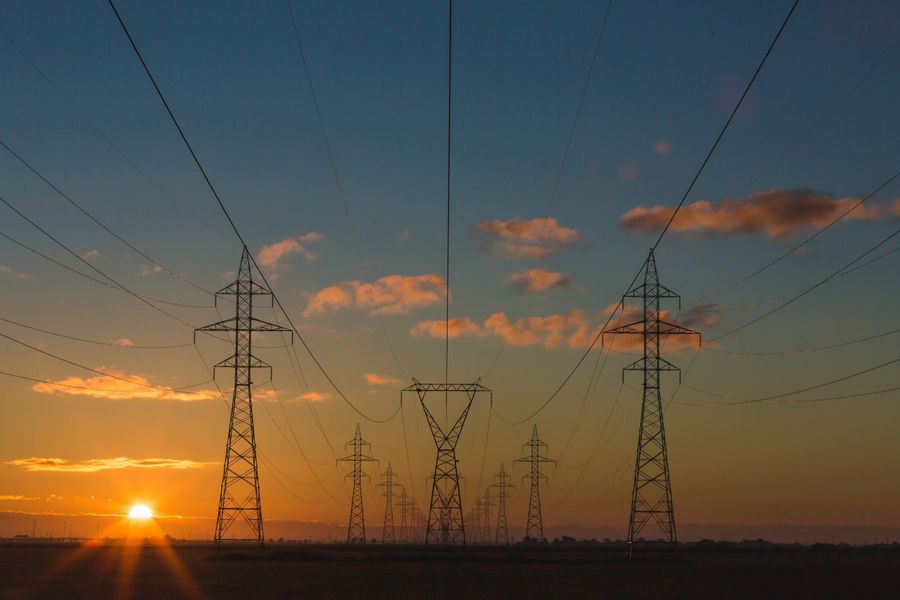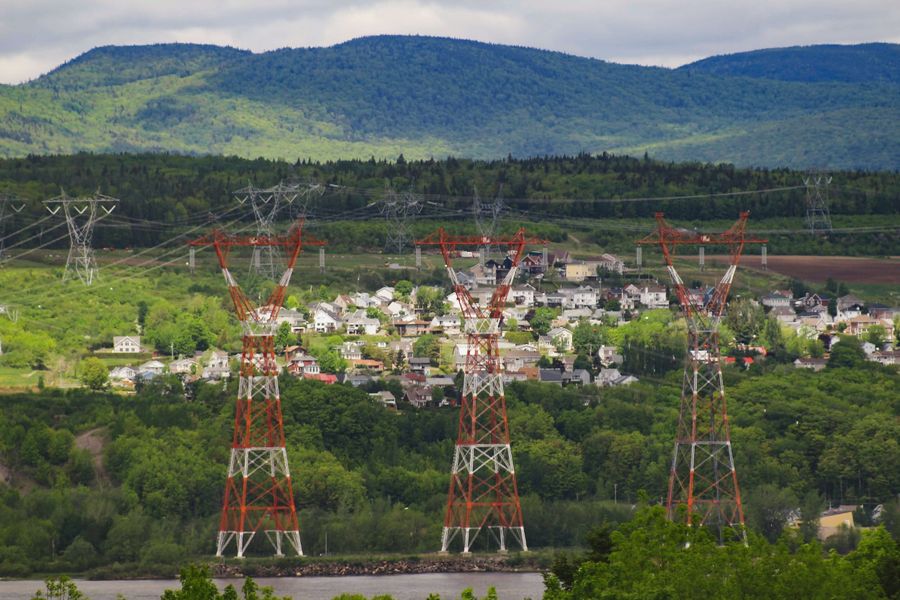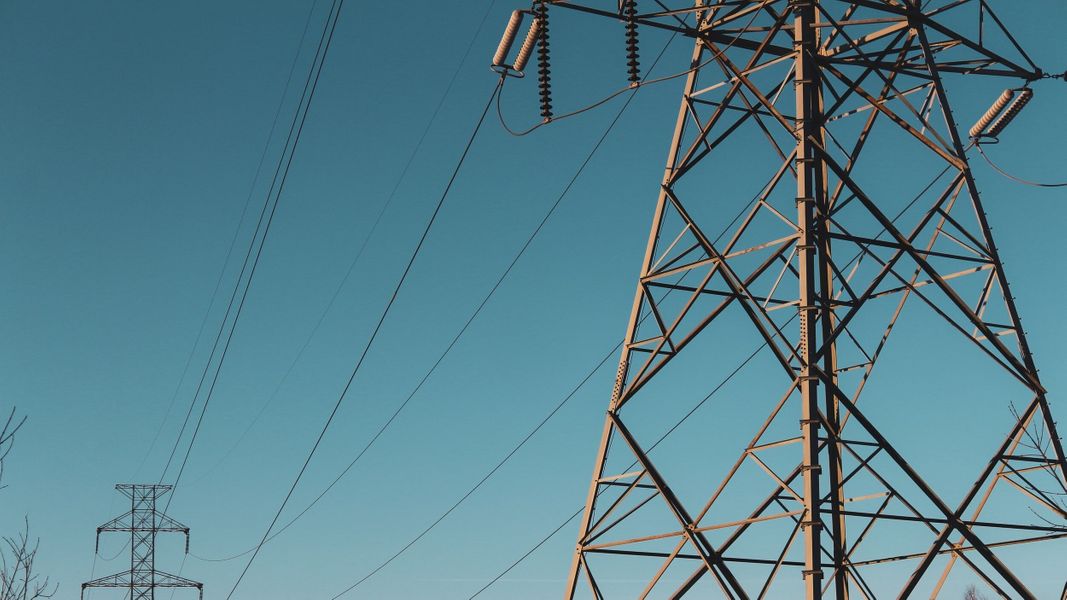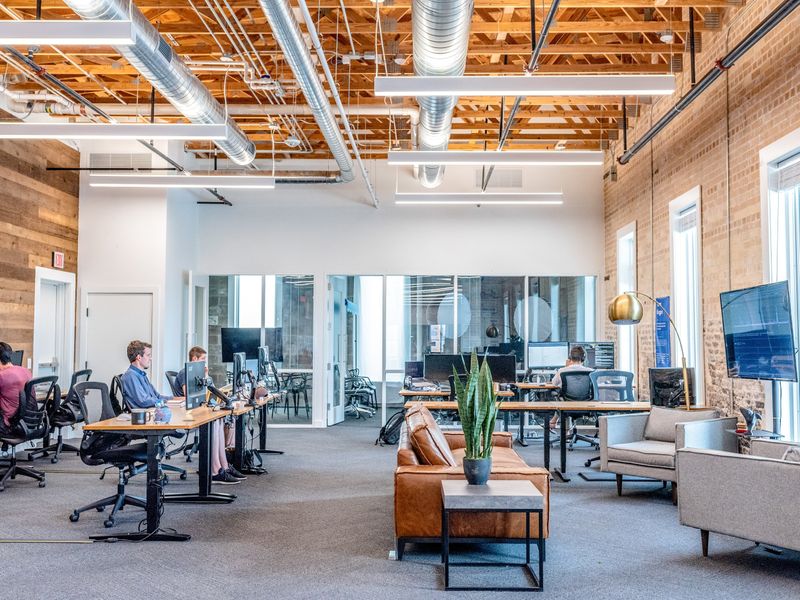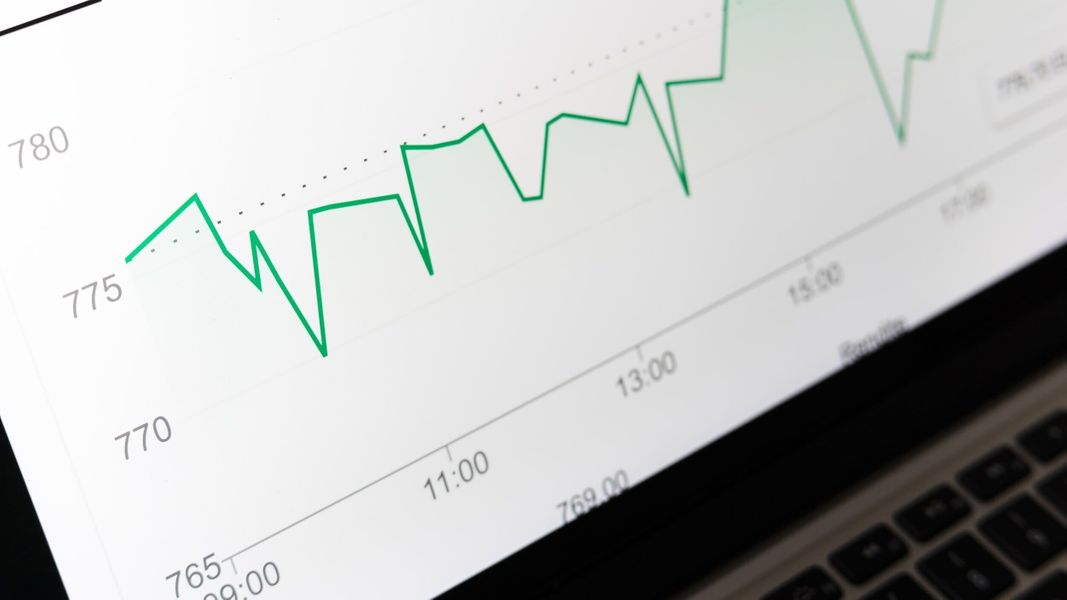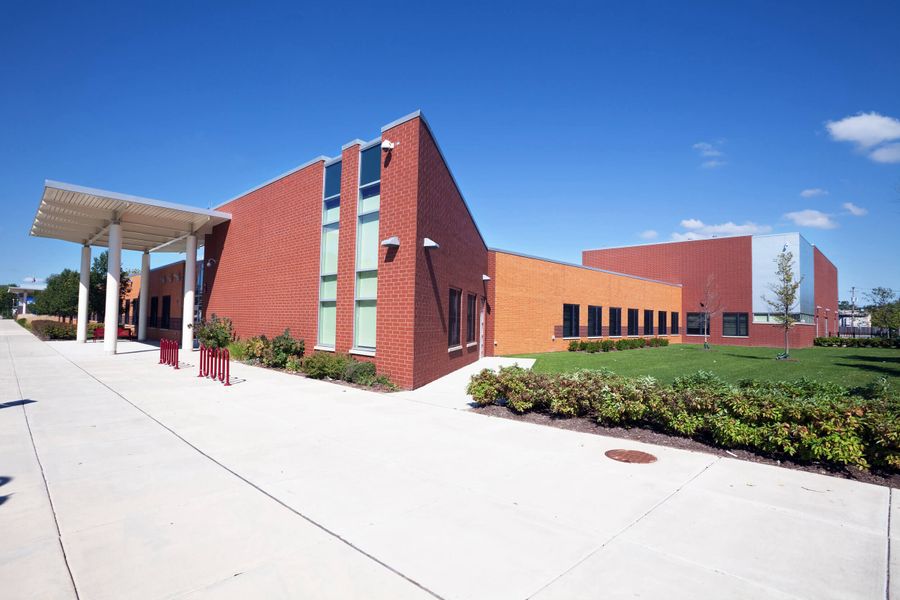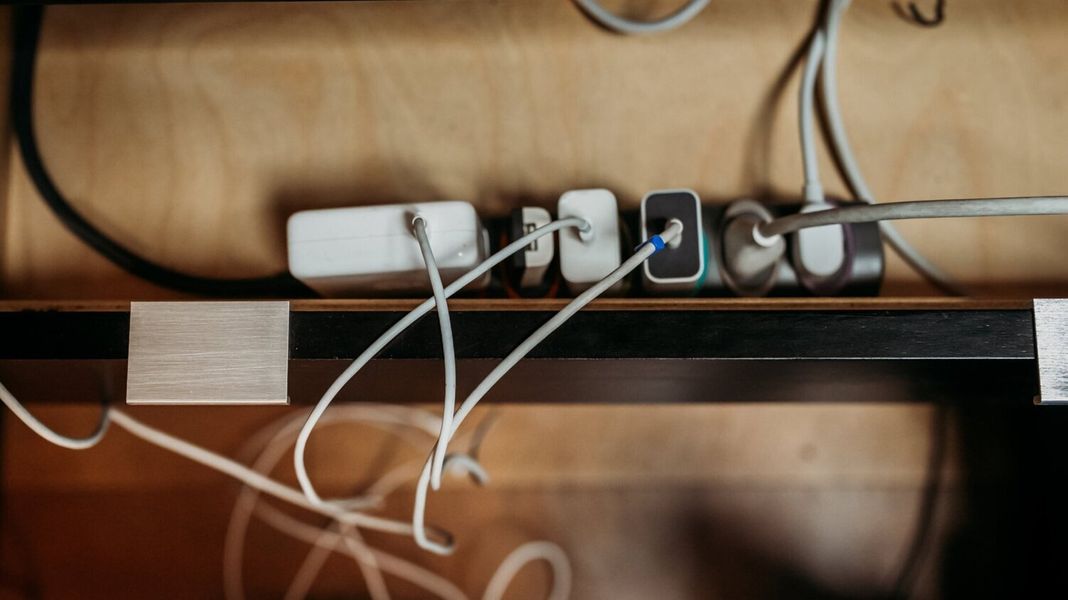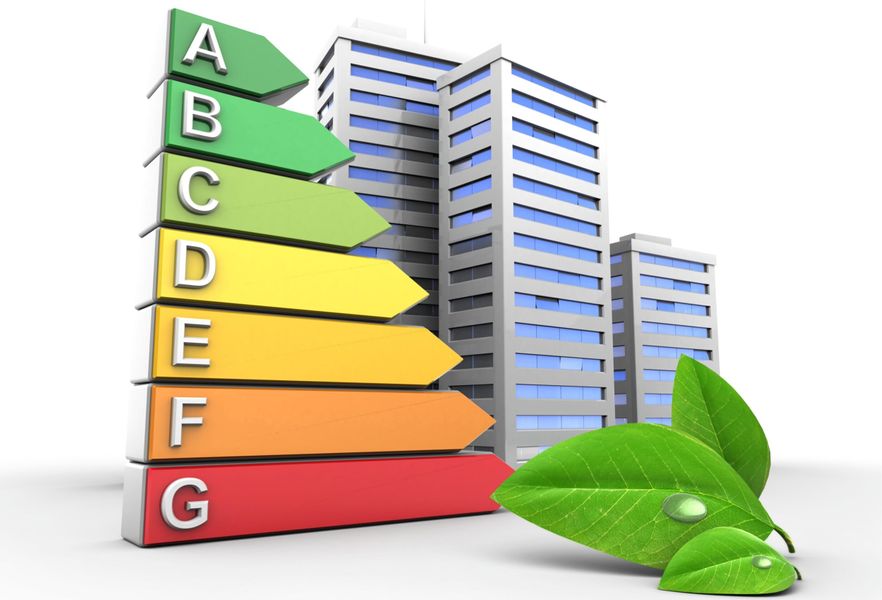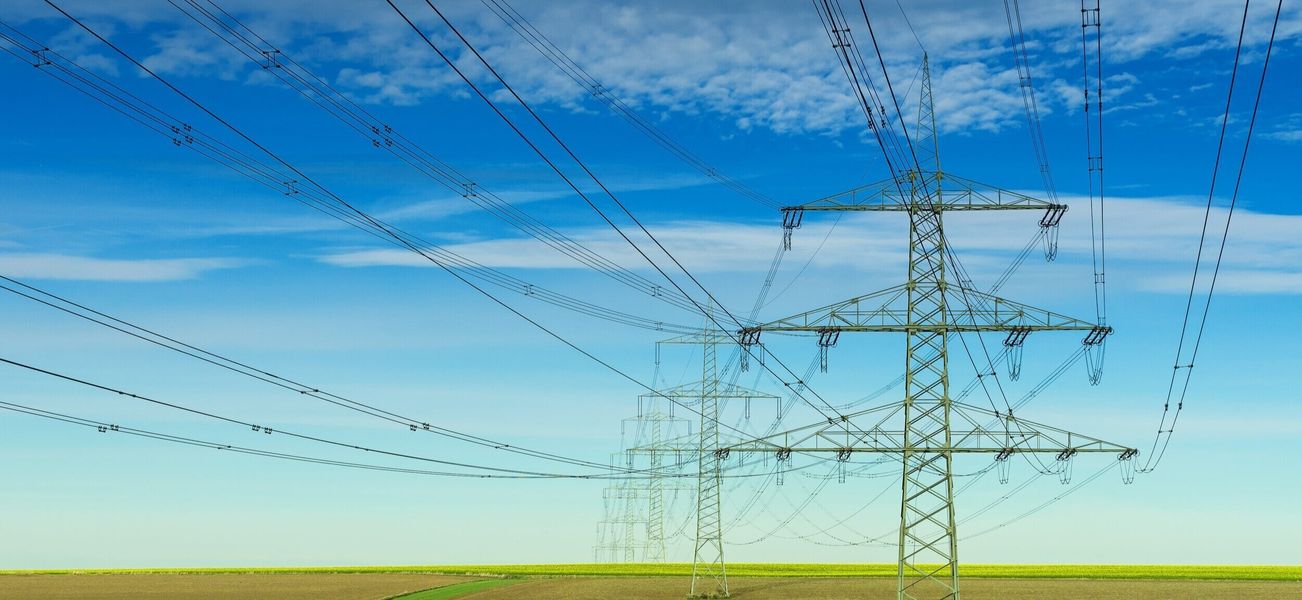Blog & News
Stay up to date with the latest articles and resources.
To Landfill or To Recycle? That is the Question
Today’s article is straying a bit from energy, a topic we’ve covered in various ways over the past few months. Let’s take a moment to talk more about waste and recycling! Over the past few years, waste has become a hot topic in the sustainability field. There’s landfill waste, recycling, food waste, electronic waste (or e-waste), and many other kinds of materials entering our waste stream every day. Let’s start our waste journey by talking about recycling.
Recycling rates across the country vary significantly, depending on city/state programs, sorting capabilities, and other factors. For example, the recycling rate in the City of Chicago is an abysmal 9%, whereas the recycling rate in San Francisco is much higher at 80%. Some things that impact recycling rates include: 1) the global market for recyclable materials, 2) communication and confusion about what can and cannot be recycled, which leads to 3) a phenomenon called “wishcycling” and contaminated recycling bins.
moreStoring Solar Power on a Large Utility-Scale
In a previous blog, we talked about battery storage for on-site solar arrays. Utilities are also considering storage at a larger, grid scale. Let’s explore the benefits of utility-scale solar and battery storage.
Utility-scale energy storage (often through batteries) is usually paired with utility-scale renewable energy projects, so let’s talk about those first. Utility-scale solar installations are much larger than residential or even commercial arrays (often measured using MW instead of KW), and usually send the power produced directly to the electricity grid rather than to individual consumers. Utilities then usually enter into power purchase agreements (PPAs) with the developers of these large scale projects to ensure the power produced is sold. There are also permitting, siting, and operating regulations that need to be followed, and local safety guidelines to ensure a project is built to the correct standards. This is a great option for electric grids since there’s a movement to clean up power production instead of relying only on fossil fuel sources like coal for electricity. They also contribute to the resiliency of an electric grid because they help diversify electricity sources so if a power plant is pulled offline (or down because of a natural disaster), there are other ways to power in emergencies.
moreStoring Solar Power
Solar power is a great alternative to fossil fuels when it comes to producing electricity for your home, office, or school. We’ve talked about the difference between on-site and community solar, and shared some incentive options to offset the costs of a renewable energy project. What if your solar array produces more energy than you need? There are two strategies for excess energy: storing it in batteries, or sending it back to the electric grid.
With battery storage, excess solar energy charges the battery, then when panels aren’t producing, the battery is used to power the building. Even though there are more battery options available now compared to a few years ago, there is still some confusion over whether batteries are helpful to consumers. This is (like many other aspects of energy use) dependent on the utility and usage of the customer. The quick answer is that batteries give users more control over where their electricity comes from, even when the sun isn’t shining, but it may or may not be more cost effective depending on how a particular utility credits their customers for giving excess production back to the grid.
moreManaging Humidity In Our Buildings
In a previous article, we talked about adjusting operations and water temperatures to help chiller systems run more efficiently. In this article, we share some information about how humidity can impact energy use, and discuss opportunities for efficiency while still meeting space humidification or dehumidification needs.
Humidity can significantly impact how comfortable a person is in a room, and how well equipment and building materials hold up over time. In the summer, if a space is too humid, people may feel hotter and therefore run their air conditioner at a cooler temperature, increasing energy use. In the winter, if a space is too dry, occupants may feel colder, and therefore require more heat to feel comfortable. Humidity can also cause issues with mold or dust mites, which can create unhealthy spaces for building occupants. Additionally, if there’s too much condensation on the pipes, that can cause issues like rust and require equipment maintenance, or even replacement.
moreCan Having A Chiller Be Energy Efficient?
Yes! Buildings and campuses, depending on their size, are heated and cooled differently. A home might use a relatively small central air conditioning and furnace combination, or maybe a furnace with window air conditioners. Larger buildings and campuses with multiple buildings, however, may utilize boilers for heating and chillers for cooling, with system pumps to distribute chilled water to various connected locations. In this article, we’re going to focus on chillers, and discuss opportunities to run them more efficiently.
Chillers send refrigerant and chilled water throughout building(s) in different pipes to cool spaces. During the cooling season, cold liquid will flow through pipes. Warm air in a room gets blown over those pipes, which pull the heat from the air, and then the cooler air is blown back out into the space. The temperature of the chilled water as it flows through the pipes plays a big role in how efficiently the system cools the spaces. One simple way to manage a chiller more efficiently is to pay attention to the water temperature and adjust based on the outdoor air temperature. If the outdoor air temperature is more mild, the water temperature may not need to be as cold as it would be if there was a bigger difference between a hot outdoor temperature and the temperature at which you desire the room to be.
moreDEMANDing Reductions
In our last blog, we talked about how electric rates include some expensive charges during the summer months. Because we often use more electricity in the summer to run equipment like air conditioning, and we can be charged more for usage (kWh) and demand (kW), it’s important to look at strategies that will help reduce both.
Especially for larger buildings with multiple rooftop or air handling units, staggering the time equipment turns on can be a great way to reduce demand (remember, demand is the amount of power needed at one time to run a piece of equipment or a building). Utilities frequently charge for the highest demand (kW) needed by a building during a 15-minute interval during their billing period, so spreading out demand for large pieces of equipment can be useful. For example, in a school where students arrive at 8am and teachers at 7am, the building may want to start cooling systems at 6:30am to reach an occupied set-point of 76 degrees. Instead of all equipment turning on at 6:30am causing a surge of power and therefore a spike in demand, perhaps one unit (or group of units) goes on at 6:10am, another at 6:30am, another at 6:50am, and another at 7:10am. This way, the equipment is starting up staggered during different 15-minute intervals.
moreElectricity in the Summer
Summer’s coming, and we’re getting ready for the activities that come along with it - no school for a few weeks, outdoor activities, and air conditioners ramping up to keep us cool. But did you know… electricity is typically more expensive in the summer? Not only do our utility bills usually go up because we’re using more electricity to run our air conditioning, but we are also being charged more by our utilities for that usage. Let’s take a closer look why, and what some of those rates look like.
One factor that goes into the price of electricity is customers’ demand for it. In the summer when it gets hot, more people turn to air conditioning to keep cool. Lots of air conditioners running at the same time increases the demand for power to keep the equipment running (see our previous blog about usage and demand for more information about demand). Electric grids are generally designed to handle high summer demand from customers, who are charged based on costs to distribute electricity and maintain the infrastructure (see this blog post about how utility rates are determined).
moreDemand vs. Consumption - Electricity is Complicated!
Electricity is ubiquitous in the United States: just about every household in the country uses electricity for something - refrigerators, televisions, phone chargers, air conditioning, and sometimes for heating (although almost half (47%) of Americans use natural gas for their heating needs). While each utility is different and charges different rates for electricity based on state regulations, there are two aspects of electricity that utilities generally charge for: demand and consumption (sometimes called usage).
Demand is the amount of power needed at one time by a device or a piece of equipment, and is typically measured in watts (W) or kilowatts (kW or KW = 1000 W). A 100-watt lightbulb has a power demand of 100 W (0.1 kW) while a typical water heater requires about 4000 W (4 kW). The amount of power being used by a building depends on how much equipment is being used at one time. The need for power can vary during the day as devices like lights and dishwashers are turned on and off, or equipment such as refrigerators and air conditioners cycle on and off. If many devices are in use at once, that can add up to high demand (demand is typically lowest at night, when lights, computers and other devices are off). Buildings can reduce demand by minimizing how much equipment is running concurrently – for example, by not running dishwashers, washing machines, and air conditioners at the same time.
moreBetter Indoor Air Quality Means Happier (and Healthier) Occupants
portant things to think about when considering air quality in our work, home, school, and other spaces are ventilation and cleaning products.
Americans generally spend 90% of their time indoors, so getting ventilation (the amount of outside air supplied to a building) right is important to keeping everyone healthy and comfortable while at work, school, and home. ASHRAE (the American Society of Heating, Refrigerating, and Air-Conditioning Engineers) has standards that require minimum ventilation rates and acceptable air quality for building interiors. Buildings that go above and beyond those standards can show improved occupant health and comfort.
One tricky thing about ventilation is that the rates to make a building feel comfortable can vary depending on the building’s location (and how polluted outside air is compared to indoors), function (what occupants are doing in the building), and age (older buildings may have other equipment and building envelope concerns). Generally though, studies show that increased ventilation can positively impact things like productivity, academic performance, and health. For example, improved indoor air quality can lead to higher cognitive function, which is great for productivity at work and in school.
moreWho Decides the Utilities’ Rates?
Electricity and natural gas are the two common ways we power our buildings. The price of energy is often just accepted by customers, without knowledge about how these prices are set. This article will review some general things that go into setting utility rates. Keep in mind that these may vary by state since each state’s utilities are managed differently (e.g., regulated vs. deregulated), so be sure to look into the specifics for your state.
Electric and natural gas prices are set to reflect the costs for a utility to supply, generate, and distribute the energy to its customers. This includes things like costs to build, operate, and maintain distribution lines, power plants, and the power grid. Rates can also differ by customer type (residential, commercial, industrial) based on the amount of energy used. For example, an industrial customer likely uses significantly more electricity than a residential customer, and therefore might purchase their energy in bulk at a lower rate.
moreWhat is a Regulated vs. Deregulated Utility?
You may have heard the terms “regulated” or “deregulated” used to describe the particular utility market in which you live, work, learn, or play. I started to learn about the difference between regulated and deregulated markets when I moved from Arizona (a regulated market) to Illinois (a deregulated market); I am still learning about their differences.
As a note, for this article, I am generally writing about electricity markets, although some states have chosen to deregulate their natural gas markets as well.
At a very high level, the general difference between the two is that a deregulated market allows for competition within the electricity supply, whereas in a regulated state, utilities can hold monopolies on the electric system. In regulated states, one power company can be responsible for how electricity is generated, the transmission lines that carry the power from the generation source, and the distribution lines that then bring electricity to consumers’ buildings (homes, offices, schools, etc.). In deregulated states, generation is separate from distribution and transmission, and consumers can choose to buy their power from different companies (although a main utility is still responsible for delivering the power through the transmission and distribution lines).
moreIncentives for Solar and Renewables
As noted in the last article, solar can be complicated. You can install it directly on your property, buy panels as part of a larger system, or purchase a subscription to a community solar program. Options and benefits could differ depending on the state though, so today, we’re going to talk about different renewable energy opportunities around the country.
Sometimes people assume that solar power is only viable in the sunniest parts of our country - California, the southwest, Hawaii, Texas, Florida. While solar radiation is certainly stronger in these areas, there is enough sun shining everywhere to make solar possible around the country. The Climate Reality Project found that solar panels will even work when it’s cloudy. Rather than determining whether a location is sunny enough, how state policies address renewable energy is increasingly important to determine if solar is a good option for a building.
moreOn-Site Solar vs. Community Solar - What Should You Do?
Are you interested in going solar, but aren’t sure where to start? You’re not alone! Solar energy can be complicated, but there are lots of benefits. In today’s article, we’re going to talk about on-site (or rooftop) solar and community solar. In the next article, we’ll talk about how solar energy opportunities and incentives differ by state.
Solar energy is electricity or thermal energy produced by the sun. This is one of the most common forms of renewable energy since the sun will always shine (according to NOAA, 173,000 terawatts of solar energy hits the Earth at any given time, more than 10,000 times the amount of energy used in the world). A common form of solar energy production is through photovoltaic (PV) panels that convert the sun’s rays into electricity through the technology within the panels; that’s what we’re talking about today.
On-site solar and community solar are two ways customers can use solar-produced electricity to power a home, school, or office space. Both on-site arrays and community solar installations use PV panels, but the systems differ in size and in the direct benefits a customer will see (check out a previous Fusebox blog post to learn more about the ins and outs of solar installations).
moreEnergy Benchmarking Is Becoming Mainstream
You can’t manage what you don’t measure. This is a common phrase often heard when talking about energy management. It’s also why many cities, counties, and states around the country have passed energy benchmarking and transparency ordinances over the past few years.
Benchmarking policies require that certain building types of certain sizes track and submit their energy data to the city or state. These efforts allow jurisdictions to track progress on energy reduction goals and provide the public an opportunity to see the energy use of buildings in their area. California, for example, passed a law in 2015 that requires all buildings over 50,000 square feet to benchmark and report their energy use to the state. Individual Californian cities, like Los Angeles and San Francisco, have gone even further and require certain buildings smaller than 50,000 square feet to track their usage. These city ordinances increase the number of buildings covered throughout the state.
moreThe Cost of Water is Increasing…Now What?
In previous articles, we talked about tracking and conserving water in buildings and reusing water when possible. Today, we’re going to talk about the costs of water and why it’s financially beneficial and environmentally reasonable to conserve water.
In general, water rates across the country have been increasing over the past decade or so. Circle of Blue (an organization that researches and shares information about water resources and related climate change impacts) has been analyzing water rates in 30 U.S. cities since 2010. During a podcast about the 2019 trends, they noted an overall water cost increase of about 3%, acknowledging that increases differed between cities: Phoenix saw a 5.5% - 7.5% increase in 2019 monthly costs from 2018; Chicago, a 1.8% increase; and Los Angeles, a 1.9% - 7.0% increase. These percentages are based on bills from families of four using 150, 100, and 50 gallons of water per day.
moreGift-Giving For The Energy and Sustainability-Minded
The holidays are coming up, which means festive decorations, time with family (safely, while following social distancing, mask-wearing, and gathering size recommendations), and gift-giving! Today, we’re sharing gift ideas for the energy and sustainability enthusiast in your life.
For a math or science teacher:
Whether or not they teach about energy efficiency, a basic Kill-A-Watt meter (or one that will also help calculate a carbon footprint) can be a fun tool that a teacher could use in their classroom or at home. A Kill-A-Watt meter allows users to plug in electronic devices and measure the amount of energy that the device uses. You can also set the price per kWh so the meter can help calculate how much devices might cost per month.
For someone who has all the tech gadgets:
A smart plug could be a great choice for someone who’s into their smart home. Smart plugs allow users to plug in devices, manage on/off/standby settings, and monitor the devices energy use from a smart phone. All you need is a wifi signal. Additionally, some smart plugs will integrate with your Google, Amazon, or Apple Smart Home system.
moreWater Reuse is Water Conservation!
Recently, we talked about strategies to manage and save water within buildings to make sure we’re protecting the availability of this important resource. Today, we want to talk about reusing water from buildings and managing stormwater efficiently.
There are lots of innovative technologies being tested and implemented to reduce building-wide water use. Two of those technologies include capturing greywater from the building and harvesting rainwater from the site to reuse for nonpotable uses (not for human consumption). These strategies can protect our water systems from taking in excess or contaminated water, and can also help building managers save on water bills because it means using less water through the meter.
Capturing greywater is a great way to make sure excess water isn’t wasted or sent into the sewer system, potentially contaminating the rivers, lakes, and main water sources. Greywater is typically defined as lightly used water from sinks, cooling towers, or washing machines, but that has not come in contact with human or animal feces (so not water from toilets). Greywater systems generally treat and clean the water again to make it usable for nonpotable activities, like flushing toilets or irrigating the landscape; the treatment is not as thorough as water treated for potable uses though, so should not be ingested during reuse. Greywater systems can be technical and expensive upfront, but depending on the size and function of a building, they may be worth the investment. By reusing this water instead of letting it get wasted down the drain means that a building won’t be using fresh, “new” water for things that don’t require it.
moreTracking and Reducing Water Use in Your Building
Water is a precious resource, but sometimes people don’t give it a second thought. But we should! The next two articles will discuss challenges around our water supply, and strategies buildings can take to protect this valuable resource through conservation and stormwater management.
Water scarcity is a pressing concern; for example, in the Southwest, the amount of water coming from the Colorado River (and therefore available to the seven states it provides resources) has declined over the past 20 years. With cities in the Southwest growing significantly, they’ve had to do so with less water (or at least the same amount of water) than a few decades ago. Many cities have been able to reduce their per capita water consumption, but it’s important to continue to be diligent about water conservation so that as cities grow, water resources don’t become even more scarce.
According to the EPA, commercial and institutional buildings use about 17% of the water from our public resources, and the largest percentage of that water use comes from domestic water use (from things like sinks and restrooms). That means there’s a lot that can be done inside a facility to conserve water.
moreTeachers as Energy Conservation Champions in Schools
In previous articles, we’ve shared how important it is to communicate energy conservation goals and actions to tenants, and why building occupants should manage their plug loads. Today, we’re going to focus on engaging school staff and students with energy conservation. Teachers and students can help facilities staff meet energy goals with a few easy (and educational!) strategies.
Similar to residential and office building tenants, sharing data is important at schools too. Not only does it help facility managers keep staff, parents, and the community up-to-date on building energy usage and goal progress, but teachers can use this data in their classrooms. Students can review monthly energy data and analyze trends, make informed recommendations to reduce usage, and calculate potential energy savings based on proposed actions. Tools like Fusebox, that track and measure this information, can help school occupants review and use this information strategically.
morePlug Loads and Commercial Office Tenants
In a previous article, we talked about engaging residential building occupants with energy conservation, in particular the importance of communicating goals, why the goals are being set, and the outcomes and benefits from actions to achieve the goals. Today, let’s talk about strategies that could be effective when engaging office building tenants with energy efficiency.
Similar to residential tenants, being transparent and sharing energy use data with office tenants is critical. If a property manager wants to improve their building’s efficiency, reporting usage to tenants (and the public) is important. Making this data available, either at a whole-building level, or by office suite, helps property managers plan and justify energy efficiency projects, and helps building occupants be more aware and accountable for their energy-using actions and habits. (Additionally, buildings who benchmark and report their energy use data to comply with various city energy benchmarking ordinances see improvements to their energy use in subsequent years; more on this in a future article). Tools like Fusebox can help building managers compile, review, and analyze their usage and contribute to the planning process for energy efficiency strategies.
moreCommunicating Energy Conservation With Residential Tenants
Energy conservation is important to building owners and facilities managers, but what about those who occupy the buildings - home owners and residents, commercial office tenants, students and teachers? Let’s talk about how to engage building occupants in energy conservation, starting with home owners or residential tenants.
There are, of course, simple ways to save energy in your home - use LED lightbulbs, turn off lights and electronics when they’re not in use, take shorter showers, use ceiling fans instead of turning down your AC. But what about common area and resident management of multi-family, senior living, or home owners associations (HOA)? What are some strategies to help manage energy usage for many homes or apartments?
moreWater, Waste, and Cleaning Of Buildings In A Post-COVID World
In a recent post, we discussed energy management in buildings in a post-COVID world. In this post, we’ll dive into some sustainability considerations for water use, waste management, and cleaning procedures as building managers plan for increased building occupancy over the coming weeks and months.
For the past few months, the message about washing your hands for at least 20 seconds with soap and water has been hammered home. Additionally, people are cleaning and disinfecting more frequently. These behaviors (plus others) could increase building water usage as people go back to work and school. While building managers should keep occupant health at the forefront of their planning, there are some strategies that could help reduce future water use. Using EPA WaterSense products could help make sure equipment is more water efficient than older products. Touchless automatic faucets could also be an upgrade to consider. It’s good practice to turn the water off while lathering (the CDC does not have much data to show viruses transfer by touching faucets), and motion sensors will help by automatically turning on and off water as needed. This will help save rather than wasting an additional 20 seconds of water as someone scrubs their hands with soap.
moreEnergy Management In Buildings In A Post-COVID World
2020 has been quite the year so far, especially since for many weeks (even months in some areas of the country), we have been asked to stay home to reduce the spread of the COVID-19 virus. Earlier this year, the Fusebox team shared strategies for building management teams to save on their energy bills while their school, office, and other buildings stood unoccupied.
Now, many states are re-opening. As buildings shift into full-time operation, and people start venturing into spaces that have sat empty for so long, building managers will have to balance human health and comfort with energy and resource management. To help ease the transition back into our buildings, many organizations and professional associations are providing useful tips to help people do that safely and effectively - for example, see these resources from the CDC, WHO, AIA, BOMA, IFMA, and CoreNet.
moreMyth #5: Solar Energy Saves Money
Installing solar photovoltaic (PV) panels is an excellent way to be sustainable, environmentally friendly, and, possibly, reduce your grid electric bills. However, these savings are not as simple as just installing solar panels and walking away. There are many things to take into consideration pre- and post-solar installation. Below we have created your “go-to guide” for a financially successful solar PV system.
Pre-Installation Considerations
When installing solar, one size does not fit all. It is important to properly size a system. We recommend that solar should cover no more than 70% of the total building’s consumption. Additionally, think ahead and avoid installing solar on a building/meter that will undergo future energy efficiency projects or substantial retrofits. Solar production remains fairly constant year to year, and sizing an installation prior to future, large-scale projects could result in excess generation/wasted production.
It is also important to think of exactly which building/meter the solar installation will be connected to. There is a large difference between “my school/location” has solar versus “this building/meter” has solar. A solar installation tied to a specific building/meter can only offset grid consumption associated to that specific building/meter. For example, the solar installation on the cafeteria will not offset grid consumption at the gym if the gym is not connected to the same meter as the cafeteria. Also note that the rate plan that meter is on needs to be evaluated to determine if it the best plan to support grid savings with solar.
moreMyth #4: Equipment Leads To Energy Savings, Not People
Within any organization, it can be argued that people are the most powerful resource. Behavior change is the most cost effective and powerful energy conservation tool any organization has, and yet, many fail to recognize and leverage this resource. The more people in the know, the less people who don’t know. That’s my motto! Hence, when I start working with a client, my goal is to get as many people up-to-date and trained on energy saving strategies as possible. I am willing to talk to anyone who is willing to listen! The more people who are aware of an organization’s efforts to save energy, the more likely that organization is to save. In today’s myth, we will further discuss the impact of people and their behavior change to save energy.
You Don’t Know What You Don’t Know
Facilities staff are excellent at maintaining their facilities, yet they may not have all of the knowledge needed to optimize energy savings. Additionally, they have a lot of responsibilities, and saving energy may not be something they have time to do. Thus, our focus is on engaging everyone in the organization as a team to be aware and take ownership of energy conservation efforts. Here are three case studies that show how this can be done.
moreMyth #3: We Upgraded Our Equipment So We Must Be Saving
The latest technology will always be more efficient based on factory standards. However, once the equipment is installed, the way you operate and maintain the equipment is what truly defines how efficient it is. Without the proper training, manuals, spare parts, and communication, buildings with updated equipment may, in fact, use more energy than the average building. Below are examples of when installation of new, energy-efficient equipment did not create the energy savings originally anticipated.
Who Turned on the Lights?
Lighting occupancy sensors can be a crucial part of an energy-savings project. The concept is simple, there is a sensor within a room that, after a certain period of time of inactivity, generally around 20 minutes, the lights are automatically turned off. Some estimate that this can result in a lighting energy savings of approximately 24%. Sensors can be placed, for the most part, in any part of a room and some can even be pointed in a specific direction.
moreMyth #2: Our Staff Have This Handled
When Fusebox first starts working with a new client, for the most part, the client is managing their utility data in one of two ways. Either they are just paying the bills and not managing it at all, or they are using an Excel spreadsheet. These spreadsheets end up being thousands of lines long, and generally, do not include any formulas for any true form of analysis. They are just lines and lines of data.
This is where the power of Fusebox lies. Our software and our people are able to analyze data, catch errors (as discussed in last week’s myth), and ensure our client is saving as much as possible. Below are two examples out of dozens about clients without the ability to fully understand and manage their data until Fusebox showed up.
Stop EMS’ing Around
Proper management of your Energy Management System (EMS) is one of the easiest and most effective ways to ensure energy savings. In a recent case, we began working with a client whose top management assumed that their EMS was properly being managed. However, this was a situation where everyone thought someone else had been handling it. Top management assumed that their controls vendor had properly set schedules and set points. The facilities director assumed that his individual facilities staff were properly managing the EMS. In reality, it had not been handled at all.
moreMyth #1: The Utility Company Is Always Right
As in all aspects of life, mistakes happen. However, when these mistakes lead to you being over charged by thousands, if not tens or hundreds of thousands of dollars, it is time to start paying a little closer attention. There are three main potential reasons why you could be overpaying for your utilities: broken meters recording erroneous data possibly undetected by the utility; billing errors created by utility software updates and/or manual billing processes; and, meters on the “wrong rate plan,” one that charges higher fees than a different plan. At Fusebox we, unfortunately, see these issues all of the time. Below you can find some examples of when Fusebox helped our clients save money by addressing and resolving utility errors.
My Meter Said What?!
A utility meter may be changed for a variety of reasons, including a malfunctioning part or a switch from analog to digital. A member of the Fusebox team identified unusual gas usage patterns on one meter at a school district after the utility changed out meters. Whereas the old meter had shown high use and cost for several years, the new meter consistently showed low usage and cost. There had been no change in usage patterns by the district. Fusebox contacted the utility requesting that the old meter be tested. The meter test showed that the previous meter was broken and had been for at least three years, resulting in incorrect billing. In the end, Fusebox negotiated a refund for the district of $160,000!
moreFive Energy Myths That Drain Your Budget
Over the next five weeks we will be busting some long-standing energy myths that may be draining your utility budget. Below you can get a snippet of what is to come. Keep an eye out for more details as each myth is busted!
Myth #1: The Utility Company Is Always Right
We rely on utility companies to provide us with accurate information, especially since this is a commodity we are charged for. However, is the information they are providing in actuality accurate? And how can we be sure that the technology they use is working properly? In this myth, we will discuss times when the utility may not have been as accurate as we hoped. Times when we found billing errors, broken meters, incorrect rate plans, etc. And who was there to help the districts save? Fusebox, of course!
Myth #2: Our Facilities/Business Department Staff Handles This
Fusebox team members enjoy visiting students during career days and science weeks. Very often, we get asked, “What is a typical day like for you?” This question is always impossible to answer, since, in the energy and education world, there is no “typical.” Facilities and business department staff, I am sure, would feel the same way! There are days when staff are prepping for the future, fighting fires, sitting in meetings, answering emails, etc. Very rarely do they have time to review energy data monthly, never mind weekly, or even daily. This is what Fusebox is for! With this myth, we will discuss times when facilities and business staff were unable to properly track and manage data until Fusebox came to the rescue!
moreRequest a demo and see how much you could be saving.
We will develop a tailored demo that meets your organization's needs. Request a demo today or call us at (480) 287-6148 to learn more.

